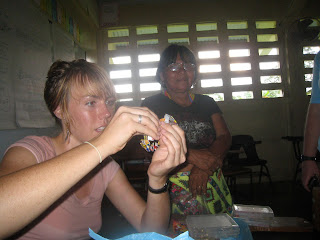October 2012
I know that people will be asking me about what my Peace
Corps service was about. I won’t
have the time or even be able to fully explain to them what happened to me in
my 2 years. But I will be able to
offer this take away:
Building Relationships
Peace Corps service to me is about development through
building relationships. The
relationships that I built with the people there is what is going to play a
huge factor in their development. They
are always going to remember that they built a rainwater catchment system with
Moises. They are going to remember
who introduced a composting latrine to them. They are going to remember how I showed them a bucket of
sh*t to prove to them that composting latrines don’t smell.
But aside from work, they are going to remember that Moises
wanted to hang out with them. They
are going to remember that for 2 years Moises was excited about going to their
fincas, going fishing, learning about canastas,
and liked to make jokes. I became
a son, a primo, a cuñado, a friend, an uncle. I know that we both value this
relationship, and that we have enriched each other’s lives by knowing each
other.
Composting latrines are going to be built and used in Alto
Playón, we have more work to do to realize that. Families are going to build themselves better rainwater
catchment systems. What will get
them there? Not money, not
projects, not grants – but the relationships that we have created.
I leave my site not only proud of the work that I have done
along with my community, but proud of all the work that my fellow Volunteers in
Panamá have done and are continuing to do. The Peace Corps is the toughest job you will ever love.
Therefore, I humbly end this blog.
















